
Fall mulching in the forest garden
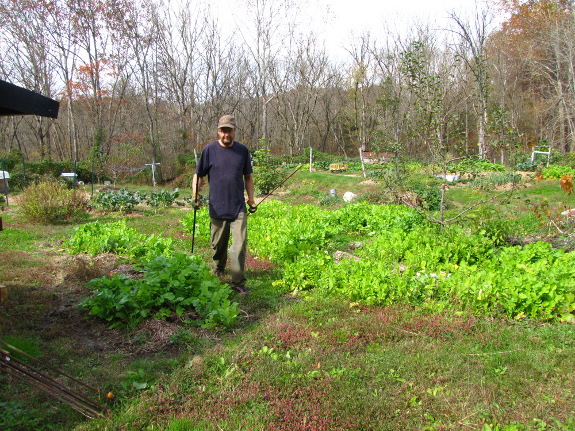
The oilseed
radishes I slipped into gaps in the forest garden in early September have formed a sea of
yellow-green, but it's time to give that area a little more TLC.
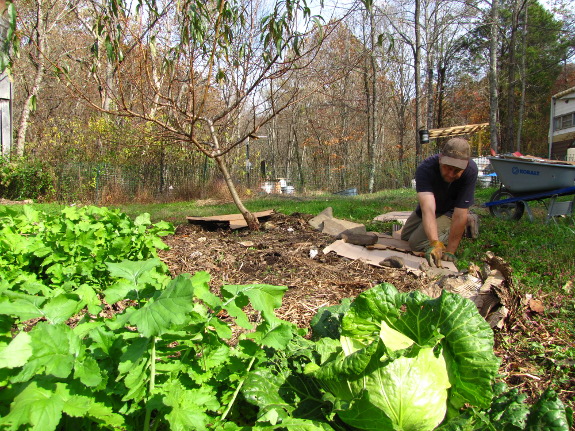
Mark pulled out the dead
tomato vines, put away stakes, and
laid down kill mulches to expand each tree's mulched area to the
dripline.
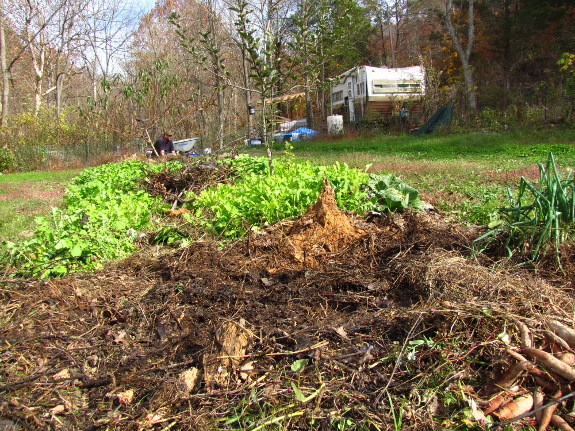
Meanwhile, I ripped out
weeds and pushed back mulch to open up bare ground beyond the trees'
likely root zone. Tossing down rye
seeds there will
result in homegrown mulch in the spring.
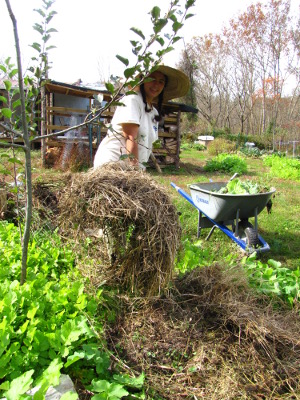 All
summer, I'd dumped wheelbarrows full of weeds at the edges of the
forest garden beds, then fertilized the high carbon biomass with urine. I could have done
this right in place around the trees, but I didn't want excess nitrogen
to send the woody plants off in vegetative sprints, and I also wanted
an easy place for wheelbarrow dumping. A final reason to keep my
weed piles outside the tree zone is that sometimes weeds reroot in our
wet climate, and mounding up the pulled out plants smothers the ones
underneath so they all perish.
All
summer, I'd dumped wheelbarrows full of weeds at the edges of the
forest garden beds, then fertilized the high carbon biomass with urine. I could have done
this right in place around the trees, but I didn't want excess nitrogen
to send the woody plants off in vegetative sprints, and I also wanted
an easy place for wheelbarrow dumping. A final reason to keep my
weed piles outside the tree zone is that sometimes weeds reroot in our
wet climate, and mounding up the pulled out plants smothers the ones
underneath so they all perish.
The result of my summer
weed piles was a lot of partially decomposed biomass ready to fertilize
and mulch my fruit trees. I forked the brown matter around the
base of each fruit tree to give them a boost just as their
roots hit peak fall growth.
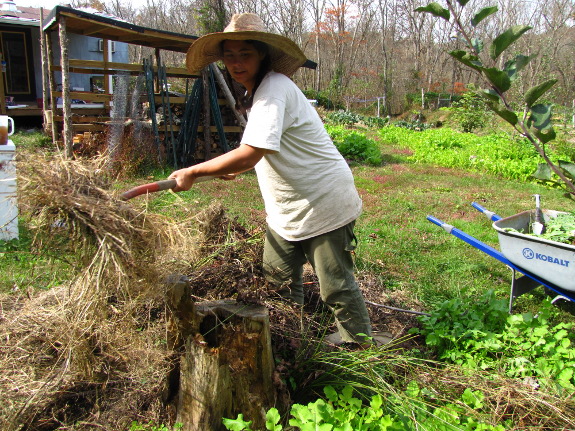
While I was at it, I
broke apart a stump that had been slowly decaying beside one of my
apple trees. Other forest garden beds are full of the fluffiest,
darkest soil imaginable from my hugelkultur donuts, and this bed could use a
woody boost too. I laid the stump pieces rotted-side-down close
to the tree so the organic matter will work its way into the soil
faster.
One beautiful fall
afternoon and half the forest garden is in shape. I hope the
extra care will help our baby trees grow faster and bear sooner.
Want more in-depth information? Browse through our books.
Or explore more posts by date or by subject.
About us: Anna Hess and Mark Hamilton spent over a decade living self-sufficiently in the mountains of Virginia before moving north to start over from scratch in the foothills of Ohio. They've experimented with permaculture, no-till gardening, trailersteading, home-based microbusinesses and much more, writing about their adventures in both blogs and books.
Want to be notified when new comments are posted on this page? Click on the RSS button after you add a comment to subscribe to the comment feed, or simply check the box beside "email replies to me" while writing your comment.
